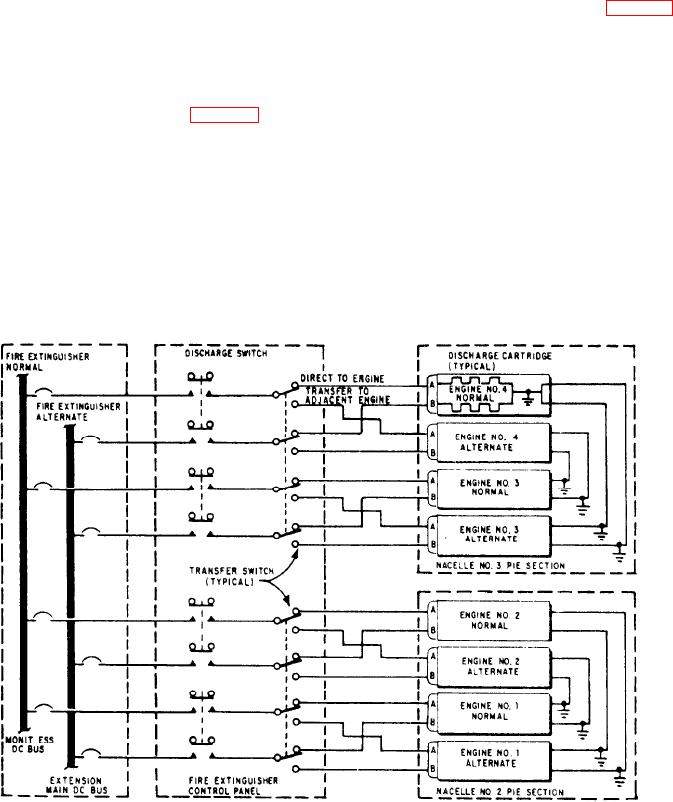
the rest of the circuits in the de-energized (no
the compartment. The lack of oxygen in the
alarm) condition. If transistor Q2 switches first,
compartment won't support combustion or life.
the contacts of relay K2-B remove transistor Q6
Don't enter an area where bromotrifluoromethane
from the discriminator circuit.
has been discharged until it is safe to do so.
Each container has two valve assemblies for
EXTINGUISHING SYSTEM
discharging the agent. Each valve assembly
The fire-extinguishing system on many aircraft
contains an explosive, electrically controlled
provides control for fires within the engines and
cartridge. When a fire-extinguishing discharge
nacelles. The extinguishing system is an electrically
switch actuates, it completes a circuit (fig. 5-14).
controlled, high rate discharge (HRD) system.
The cartridge electrically fires, allowing the slug
Normally, you, the AE, will troubleshoot the
to rupture the frangible disk in the neck of the
HRD system electrical circuits only.
container. When the frangible disk is ruptured,
The extinguishing agent container is a welded
nitrogen pressure expels the extinguishing agent.
steel sphere, 9 inches in diameter and cadmium
plated for corrosion prevention (fig. 5-13). Each
container has a charge of bromotrifluoromethane
CAUTION
and is pressurized with nitrogen. Bromotri-
The cartridge mentioned in the above
fluoromethane (CF3Br in liquid form) is nontoxic
paragraph is an explosive device. Use
and classed as a nonpoison; however, it readily
extreme caution when working on or near
vaporizes, is odorless, and can be harmful. You
this device.
should handle it carefully. Don't let it come
in contact with your skin; frostbite or low-
Refer to "Cartridge Activated Devices
temperature burns may result.
(CADS) Manual," NA 11-100-1. You need
As it leaves the system, vaporization changes
to have an ordnance certification before
the liquid to a gas, displacing the oxygen within
working on this system.
Figure 5-14.-Engine fire-extinguishing circuit schematic.

